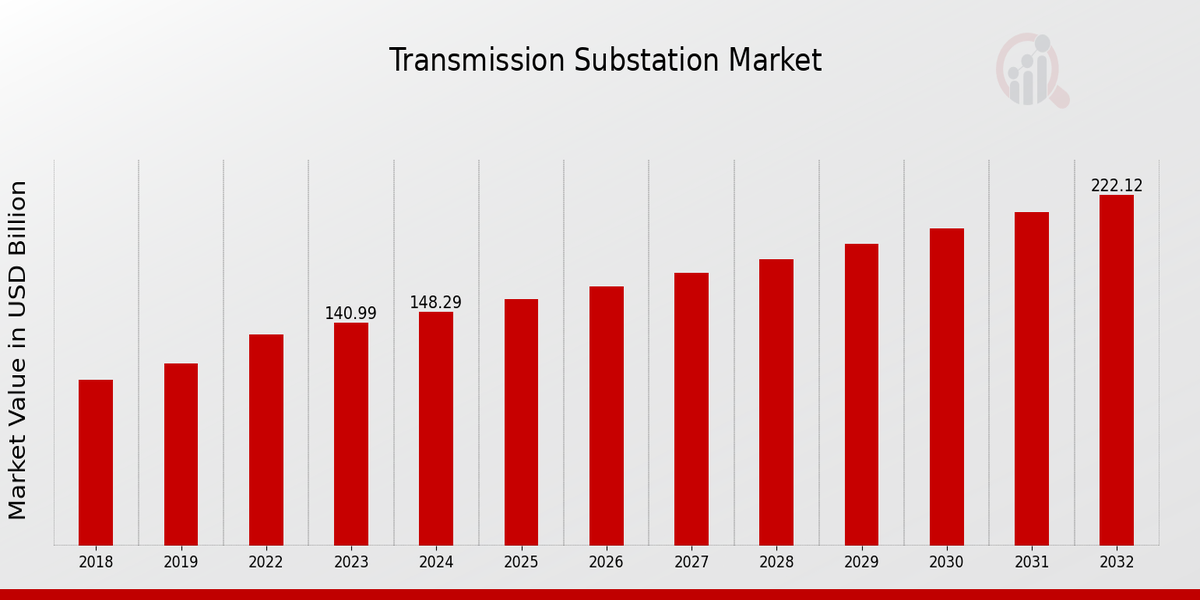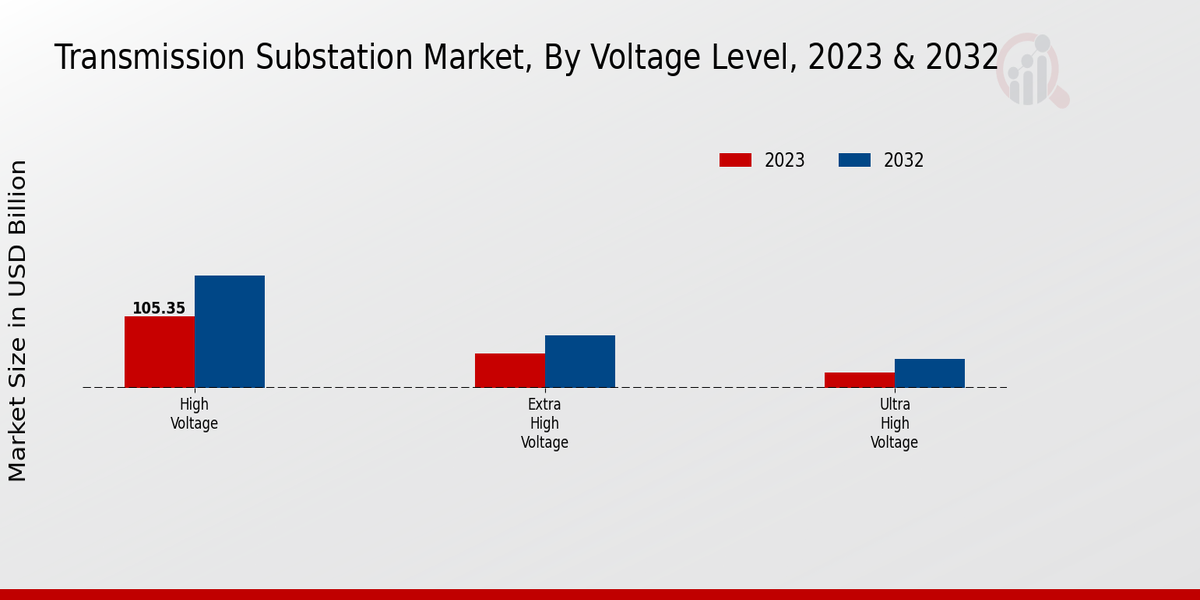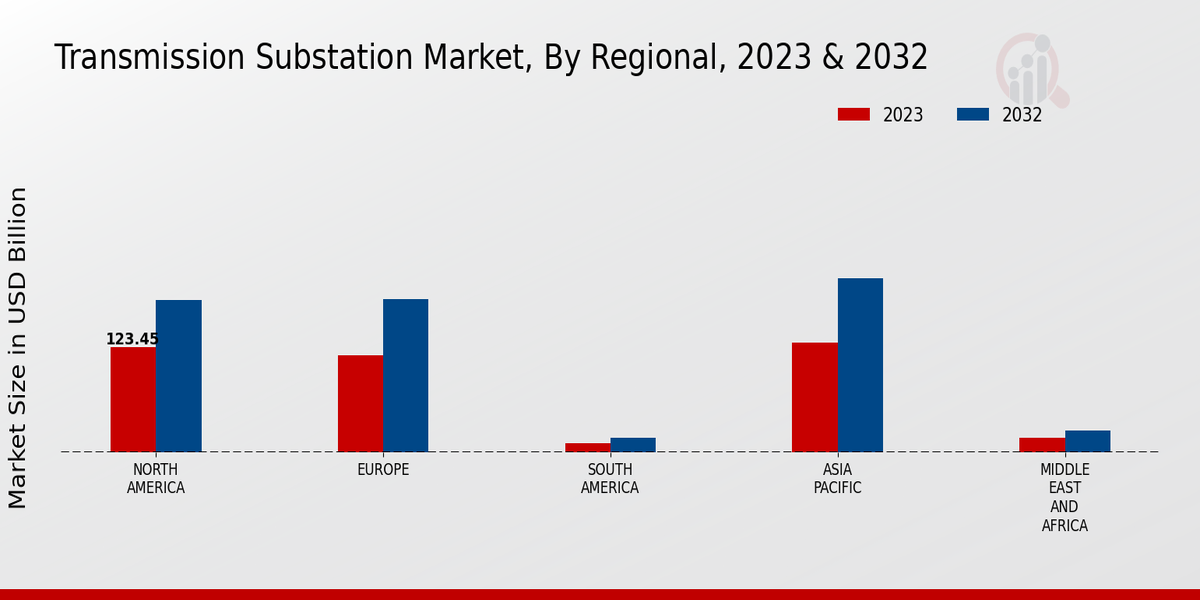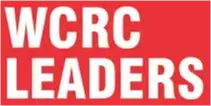Global Transmission Substation Market Overview
As per MRFR analysis, the Transmission Substation Market Size was estimated at 134.05 (USD Billion) in 2022. The Transmission Substation Market Industry is expected to grow from 140.99(USD Billion) in 2023 to 222.1 (USD Billion) by 2032. The Transmission Substation Market CAGR (growth rate) is expected to be around 5.18% during the forecast period (2024 - 2032).
Key Transmission Substation Market Trends Highlighted
Key factors propelling the transmission substation market spread across geographical regions include increasing electricity consumption, rising grid enhancement programs and growing contribution in renewable energy sources. Also pushing the market growth are the rising smart grid networks and development of distributed energy resources. Also, the policies to curb emissions and enhance energy efficiencies provide an environment that is conducive to the utilization of new substation technologies. Digital and automatic technologies are coming up as key emerging trends which support remote operation of the assets, preventive operation and increased resiliency of the grid. The market is experiencing advancement in insulating materials switch gear technologies and power electronics in substations that are enhancing the efficiency and dependability of these infrastructures. Also, the demand for the enhanced substation technologies is anticipated to increase, as protection against grid security threats becomes a core focus.

Source: Primary Research, Secondary Research, MRFR Database and Analyst Review
Transmission Substation Market Drivers
Rising Demand for Renewable Energy Integration
The Transmission Substation Market Industry is primarily driven by the increasing adoption of renewable energy sources, such as solar and wind power. These renewable energy sources require efficient and reliable transmission systems to integrate them into the existing power grid. Transmission substations play a crucial role in this integration by converting the voltage of electricity generated from renewable sources to match the voltage of the transmission network, ensuring stable and efficient power delivery.The growing emphasis on decarbonization and the transition towards a sustainable energy mix is expected to continue driving the demand for transmission substations in the coming years.
Expansion and Modernization of Grid Infrastructure
The expansion and modernization of aging grid infrastructure is another significant factor driving the Transmission Substation Market Industry. As electricity demand continues to grow, utilities are investing in upgrading and expanding their transmission networks to meet the increasing demand. This includes the construction of new transmission lines and substations, as well as the replacement of outdated equipment. The need for reliable and efficient transmission systems to reduce power losses and improve grid stability is also the demand for advanced transmission substation technologies.
Technological Advancements and Smart Grid Development
Technological advancements and the development of smart grids are also shaping the Transmission Substation Market Industry. The integration of digital technologies, such as sensors, automation, and communication systems, is enhancing the efficiency and reliability of transmission substations. Smart substations enable remote monitoring, control, and optimization of power flow, leading to improved grid stability and reduced operational costs.The adoption of smart grid technologies is expected to continue driving the demand for advanced transmission substations that can support the integration of renewable energy sources and meet the evolving needs of the power grid.
Transmission Substation Market Segment Insights
Transmission Substation Market Voltage Level Insights
The Transmission Substation Market is segmented by voltage level into High Voltage (HV), Extra High Voltage (EHV), and Ultra High Voltage (UHV). High Voltage (HV) HV substations operate at voltages between 33 kV and 150 kV. They are commonly used for the distribution of electricity to urban and industrial areas. The HV segment held a significant market share in 2023 and is expected to continue its dominance throughout the forecast period. The growing demand for electricity in urban areas and the expansion of industrial infrastructure are key factors driving the growth of the HV segment.Extra High Voltage (EHV) EHV substations operate at voltages between 220 kV and 400 kV. They are primarily used for the transmission of electricity over long distances. The EHV segment is expected to witness substantial growth during the forecast period due to the increasing need for efficient and reliable transmission of electricity across regions. Ultra High Voltage (UHV) UHV substations operate at voltages above 500 kV. They are used for the transmission of large amounts of electricity over very long distances with minimal losses. The UHV segment is still in its early stages of development but is expected to gain traction in the coming years as countries look to explore renewable energy sources and integrate them into their grids.The growth of the Transmission Substation Market is being driven by several factors, including the increasing demand for electricity, the expansion of renewable energy generation, and the need for reliable and efficient transmission infrastructure.

Source: Primary Research, Secondary Research, MRFR Database and Analyst Review
Transmission Substation Market Substation Type Insights
The Transmission Substation Market size is expected to reach USD 222.1 billion by 2032, exhibiting a CAGR of 5.18% during the forecast period. The market growth is attributed to the increasing demand for reliable and efficient power transmission systems, driven by the rising electricity consumption and the integration of renewable energy sources. By substation type, the market is segmented into air-insulated substations (AIS), gas-insulated substations (GIS), hybrid substations, and mobile substations. AIS accounts for the largest share of the market due to its cost-effectiveness and simplicity.However, GIS is gaining popularity due to its compact size, reduced environmental impact, and higher reliability. Hybrid substations combine the advantages of both AIS and GIS, offering a cost-effective solution with improved performance. Mobile substations are gaining traction in remote areas and temporary applications due to their flexibility and ease of deployment.
Transmission Substation Market Product Type Insights
The Transmission Substation Market is segmented by product type into transformers, switchgear, circuit breakers, voltage regulators, and protection and control systems. Among these, transformers accounted for the largest revenue share in 2023 and are expected to maintain their dominance throughout the forecast period. The growth of the transformers segment can be attributed to the increasing demand for efficient and reliable power transmission and distribution systems. The rising adoption of renewable energy sources, such as solar and wind power, is also driving the demand for transformers as they are essential for converting the voltage of electricity generated from renewable sources to levels that can be transmitted over long distances.
Transmission Substation Market Application Insights
Application Segment The application segment of the Transmission Substation Market is categorized into Power Generation, Power Transmission, Power Distribution, and Industrial and Commercial Applications. Power Transmission holds the largest market share due to the increasing demand for efficient and reliable transmission of electricity over long distances. The Power Distribution segment is expected to witness significant growth due to the expansion of distribution networks to meet the growing demand for electricity. Industrial and Commercial Applications are gaining traction as industries and businesses seek to optimize their power consumption and improve efficiency.It is estimated that the Industrial and Commercial Applications segment will account for over 25% of the Transmission Substation Market revenue by 2024. The growth in this segment is attributed to the increasing adoption of smart grid technologies and the need for reliable and efficient power supply in industrial and commercial establishments.
Transmission Substation Market End-User Insights
The Transmission Substation Market segmentation by end-user includes Utilities, Independent Power Producers (IPPs), Industrial and Commercial Users, and Residential Users. Utilities held the largest share of the market in 2023, accounting for over 50% of the Transmission Substation Market revenue. This is due to the increasing demand for electricity from residential, commercial, and industrial sectors. Independent Power Producers (IPPs) are expected to be the fastest-growing segment during the forecast period, with a CAGR of over 6%.The growth of this segment can be attributed to the increasing adoption of renewable energy sources, such as solar and wind power, which require specialized transmission substations to integrate into the grid. Industrial and commercial users are also expected to contribute significantly to the growth of the Transmission Substation Market. The increasing demand for reliable and efficient power supply from these sectors is driving the demand for transmission substations. Residential users are expected to have a steady growth rate during the forecast period.The rising population and increasing urbanization are contributing to the growth of this segment.
Transmission Substation Market Regional Insights
North America is expected to hold the largest market share of the Transmission Substation Market in 2023 and is projected to continue its dominance over the forecast period. The region's robust economic growth, coupled with significant investments in infrastructure development, is driving the demand for reliable and efficient power transmission systems. The presence of major industry players in the region, such as Siemens and ABB, contributes to the growth of the North American market. Europe is another key region in the Transmission Substation Market, with a significant market share.The region's focus on renewable energy integration and grid modernization is fueling the demand for advanced transmission substations. Strict environmental regulations and government initiatives promoting clean energy adoption are driving the growth of the European market. The Asia-Pacific region is expected to witness substantial growth in the Transmission Substation Market over the forecast period. Rapid urbanization, industrialization, and increasing electricity demand in emerging economies such as China and India are major growth drivers. The region's growing focus on electrification and smart grid development is further contributing to the market expansion.South America and the Middle East and Africa (MEA) regions are expected to experience steady growth in the Transmission Substation Market. Increasing investment in power generation and distribution infrastructure, coupled with government initiatives to improve electricity access, is driving the demand for reliable transmission substations in these regions.

Source: Primary Research, Secondary Research, MRFR Database and Analyst Review
Transmission Substation Market Key Players and Competitive Insights
Major players in the Transmission Substation Market industry are continuously focusing on providing advanced and efficient transmission substation solutions to meet the evolving demands of the power sector. Leading Transmission Substation Market players are investing in research and development to enhance the performance and reliability of their products. They are also forming strategic partnerships and collaborations to expand their geographical reach and strengthen their market position. The Transmission Substation Market Competitive Landscape is characterized by the presence of both established and emerging players.A leading player in the Transmission Substation Market is ABB. The company offers a comprehensive range of transmission substation solutions, including power transformers, circuit breakers, gas-insulated switchgear, and control and protection systems. ABB has a global presence with manufacturing facilities in over 100 countries and a strong customer base in the utility, industrial, and renewable energy sectors. The company is committed to providing innovative and sustainable solutions that meet the evolving needs of its customers.A competitor in the Transmission Substation Market is Siemens. The company offers a wide portfolio of transmission substation products, including high-voltage gas-insulated switchgear, power transformers, and protection and control systems. Siemens has a strong global presence and a diverse customer base in the power generation, transmission, and distribution industries. The company is focused on providing reliable and efficient solutions that help its customers meet their operational and sustainability goals. Siemens is investing in research and development to enhance the performance of its products and to introduce new technologies that address the challenges of the changing power grid.
Key Companies in the Transmission Substation Market Include
- Siemens
- Mitsubishi Electric
- Larsen Toubro
- Power Grid Corporation of India Limited
- Bharat Heavy Electricals Limited
- Schneider Electric
- Hitachi
- Samsung Heavy Industries
- General Electric
- Eaton
- ABB
- China Electric Power Equipment and Technology Company Limited
- Hyundai Heavy Industries
- Doosan Heavy Industries Construction
- Toshiba
Transmission Substation Market Industry Developments
The Transmission Substation Market is poised to grow significantly in the coming years, driven by increasing demand for electricity and the need to upgrade aging infrastructure. The market is expected to reach a valuation of USD 222.1 billion by 2032, exhibiting a CAGR of 5.18% from 2024 to 2032. Key trends shaping the market include the adoption of smart grid technologies, the integration of renewable energy sources, and the growing emphasis on energy efficiency.Recent developments in the market include the launch of new products and solutions by leading players such as ABB, Siemens, and General Electric. For instance, in 2023, ABB introduced a new range of gas-insulated switchgear (GIS) for transmission substations, designed to enhance safety and reliability. Moreover, governments worldwide are implementing supportive policies and regulations to promote the adoption of transmission substations.
Transmission Substation Market Segmentation Insights
- Transmission Substation Market Voltage Level Outlook
- High Voltage (HV)
- Extra High Voltage (EHV)
- Ultra High Voltage (UHV)
- Transmission Substation Market Substation Type Outlook
- Air-Insulated Substations (AIS)
- Gas-Insulated Substations (GIS)
- Hybrid Substations
- Mobile Substations
- Transmission Substation Market Product Type Outlook
- Transformers
- Switchgear
- Circuit Breakers
- Voltage Regulators
- Protection and Control Systems
- Transmission Substation Market Application Outlook
- Power Generation
- Power Transmission
- Power Distribution
- Industrial and Commercial Applications
- Transmission Substation Market End-User Outlook
- Utilities
- Independent Power Producers (IPPs)
- Industrial and Commercial Users
- Residential Users
| Report Attribute/Metric |
Details |
| Market Size 2022 |
134.05(USD Billion) |
| Market Size 2023 |
140.99(USD Billion) |
| Market Size 2032 |
222.1(USD Billion) |
| Compound Annual Growth Rate (CAGR) |
5.18% (2024 - 2032) |
| Report Coverage |
Revenue Forecast, Competitive Landscape, Growth Factors, and Trends |
| Base Year |
2023 |
| Market Forecast Period |
2024 - 2032 |
| Historical Data |
2019 - 2023 |
| Market Forecast Units |
USD Billion |
| Key Companies Profiled |
Siemens, Mitsubishi Electric, Larsen Toubro, Power Grid Corporation of India Limited, Bharat Heavy Electricals Limited, Schneider Electric, Hitachi, Samsung Heavy Industries, General Electric, Eaton, ABB, China Electric Power Equipment and Technology Company Limited, Hyundai Heavy Industries, Doosan Heavy Industries Construction, Toshiba |
| Segments Covered |
Voltage Level, Substation Type, Product Type, Application, End-User, Regional |
| Key Market Opportunities |
· Smart grid infrastructure development · Automation and digitalization · Growing demand for renewable energy · Expansion in emerging markets · Upgradation of existing substations |
| Key Market Dynamics |
Increasing renewable energy penetration, Digitalization and automation, Growing demand for reliable power transmission, Smart grid development, and Aging infrastructure |
| Countries Covered |
North America, Europe, APAC, South America, MEA |
Frequently Asked Questions (FAQ) :
The Transmission Substation Market is expected to reach USD 222.1 billion by 2032, exhibiting a CAGR of 5.18% during the forecast period (2024-2032).
North America is expected to dominate the Transmission Substation Market, accounting for the largest market share during the forecast period.
The increasing demand for electricity, the growing need for grid modernization, and the rising adoption of renewable energy sources are the major drivers of the Transmission Substation Market.
Transmission Substations are primarily used for voltage transformation, power distribution, and control in electricity transmission systems.
Some of the key competitors in the Transmission Substation Market include ABB, Siemens, General Electric, Schneider Electric, and Eaton.
The Transmission Substation Market is projected to grow at a CAGR of 5.18% from 2024 to 2032.
The major challenges faced by the Transmission Substation Market include the high cost of installation, the complex regulatory environment, and the need for skilled labor.
The growing demand for electricity in emerging economies, the increasing investment in renewable energy projects, and the technological advancements in the industry are the major opportunities for growth in the Transmission Substation Market.
The key trends in the Transmission Substation Market include the adoption of digital technologies, the integration of renewable energy sources, and the increasing focus on energy efficiency.
Government regulations play a significant role in the Transmission Substation Market, as they impact the environmental standards, safety requirements, and grid interconnection policies.





























